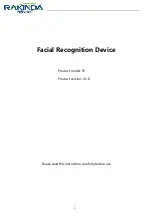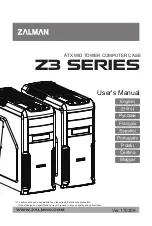
23
MODE SELECTION (D122 Only)
The D122 mode of operation can be selected with the Key switch located on the front panel. The key
can be removed in any position thus preventing the switch from inadvertently being changed. This will
ensure that if an interrupt is set, the unit will not return to its original status until the unit is reset.
In the A mode the unit will operate normally until loss of AC line power. When the AC power is
restored, the DISABLED LED will be illuminated and the CONTROL #5 will be Active-high. When reset
(by any means enumerated in the SPECIFICATION section) the unit will return to its original state. Be
advised that when the keyswitch is switched from the STD mode to the A mode the unit will be disabled
initially. A reset will return it to its operating state.
In the B mode the unit will operate normally until a loss of DC voltage to the CONTROL #4 input. A
complete circuit must be made from either CONTROL #1 (+8VDC) or an External power source to the
CONTROL #4 input. When the power source is removed from the CONTROL #4 input the unit will be
disabled and the DISABLED LED will be illuminated if and only if the input is restored. When the input
voltage is restored the DISABLED LED will be illuminated and the CONTROL #5 will be Active-high.
When reset (by any means enumerated in the SPECIFICATION section) the unit will return to its original
state. (Please note that in this mode a loss a AC power will also disable the unit, as an added safety
feature.)
The original state can be set by the N.O./N.C. switch or by a external input signal. If the unit had been
opened by a RS-232 command or the PULSE O/C input, when the unit is reset, the RS-232 must send
another OPEN command or the PULSE O/C must be activated again.
In the STD mode all functions of the interrupt will be disabled and the unit will operate from all
controls.
MISCELLANEOUS
The repeat exposure specification as listed in this manual is specified at 10ms. This is an optimum
value to ensure enough pulse energy to open any
UNIBLITZ
shutter. However the T132 or D122 is
capable of operating each Vincent shutter to its maximum frequency with a slight sacrifice in shutter
opening speed. This is due to the drive circuit which allows the pulse voltage to drop with an increase in
frequency to compensate for the heat that is developed in the shutter coil. (See graphs figure #5) Please
contact the factory for specific information concerning shutter modifications and/or drive modifications
that may be necessary for operating shutters at their maximum frequency. Please note also that fuse
blowing problems, specifically shutter fuses, can be due to high frequency operation without proper fuse
selection. Due to the large number of different frequencies and duty cycles that the shutter is used with,
please contact the factory for further details regarding specific fuse selection.
TRIGGER CAUTIONS
The T132 or D122 system's capability can be greatly enhanced by external control as described
previously, however, extreme care must be taken to ensure that high voltages (see Specifications) are not
inadvertently switched into external control inputs. Also note that large negative voltages can cause
irreparable damage to the unit's internal circuitry. Exercise extreme caution.
Artisan Technology Group - Quality Instrumentation ... Guaranteed | (888) 88-SOURCE | www.artisantg.com





































